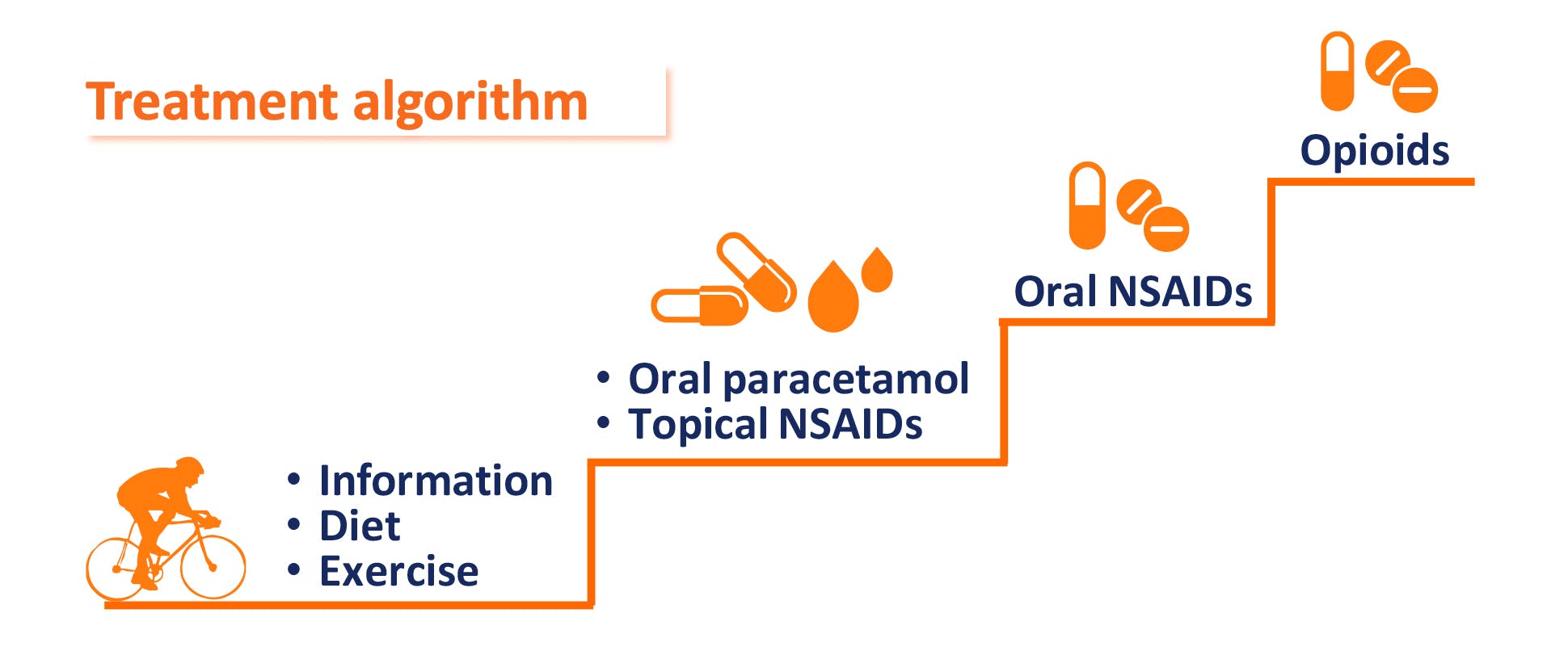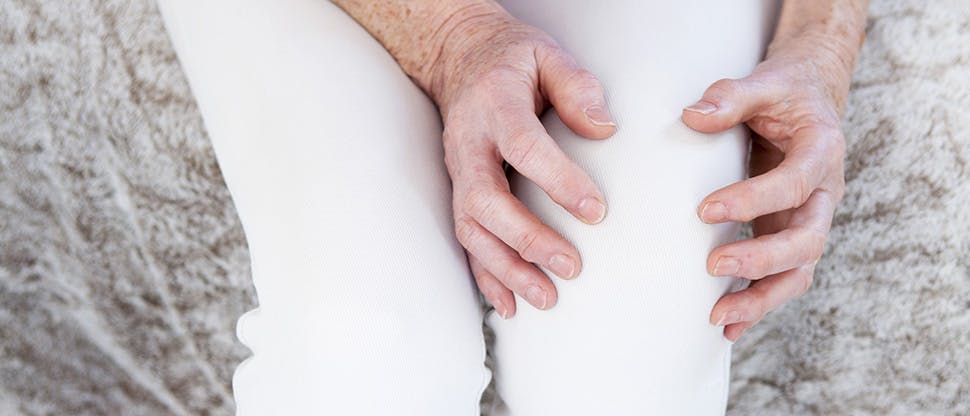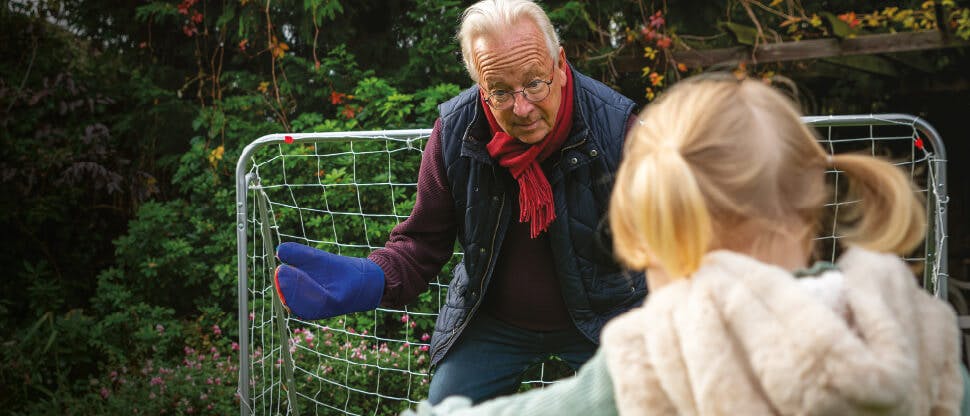Joint pain and osteoarthritis: Management

Managing joint pain and osteoarthritis
Joint pain can impinge on all areas of a person’s life, particularly in older individuals.
Together with education, a range of pharmacological and non-pharmacological techniques is available to help manage pain and flare-ups1,2 and help keep patients moving.
Guideline recommendations for treating joint pain and osteoarthritis

Guidelines recommend a stepped approach to management2,4–6
Management of osteoarthritis may require a combination of non-pharmacological and pharmacological modalities.2,6
Guidelines recommend a stepwise strategy for the pharmacological management of osteoarthritis.2,4–6
More than one pain treatment might be needed

Additional support might be needed to cover pain flares
Chronic joint pain is often accompanied by acute inflammatory flares.7
During this flare-up pain, patients may require additional short-term pain relief.7
How can Nora and Wendy be helped?

Nick
Nick, 70, wakes with pain and stiffness each morning, but does not want this to control his life or his choices.
He already receives multiple oral medications and is concerned that adding more will increase his risk of side effects.
Nick tries to stay active by gardening and going for walks but this can sometimes be a struggle.
He wants sustained relief from his pain so that he can do the things he enjoys such as playing with his grandchildren.
Voltarol Max Strength Pain Relief 2.32% Gel provides clinically proven joint pain relief in a convenient, twice-daily application, without the worry associated with drug-drug interactions.

Wendy
Wendy has experienced intermittent knee pain for 5 years. The pain disrupts her sleep and limits her previously active lifestyle and social life making her feel anxious and depressed.
Her doctor recommended weight loss and exercise as a remedy. But chronic pain creates a lack of motivation and she feels her pain prevents her from exercising.
Voltarol Osteoarthritis Joint Pain Relief 1.16% Gel is as effective as oral ibuprofen with a reduced risk of systemic side effects.13
Understanding joint pain and osteoarthritis
Signs and symptoms
Explore an overview of how to recognise joint pain and osteoarthritis and know when to refer patients.
Learn more

Voltarol Max Strength Pain Relief 2.32% Gel Diclofenac Diethylammonium for joint pain
All day joint pain relief when applied morning and night.

Voltarol Osteoarthritis Joint Pain Relief 1.16% Gel Diclofenac Diethylammonium
Proven to be as effective as ibuprofen tablets for localised joint pain.13
